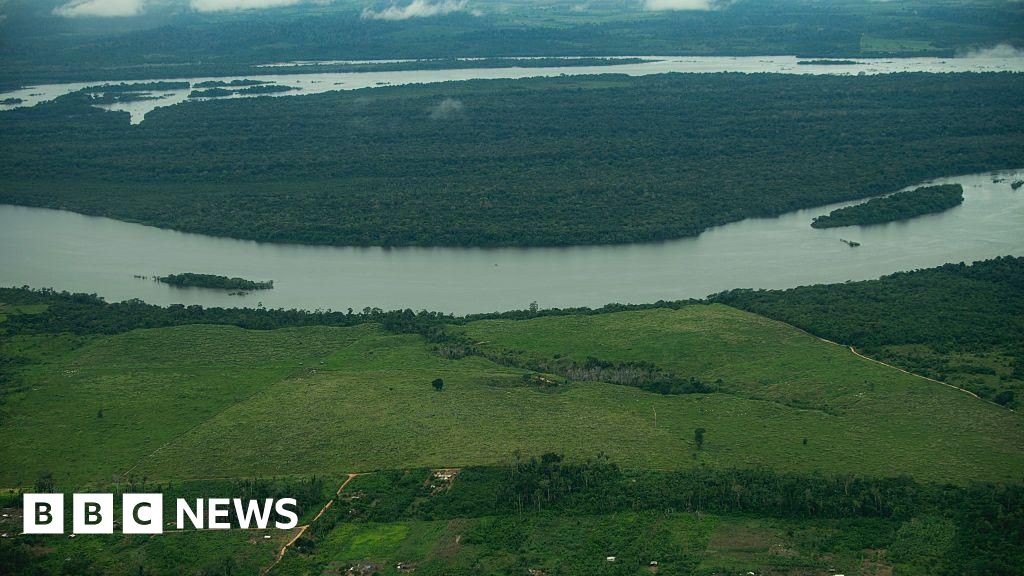Science
Brazil’s New Development Law Threatens Amazon, Warns UN Expert

A new law in Brazil aimed at expediting development approvals has raised significant concerns regarding its potential environmental impact, particularly on the Amazon rainforest. According to Astrid Puentes Riaño, a United Nations special rapporteur, the legislation could lead to “significant environmental harm and human rights violations,” representing a major rollback of protections established over decades.
The Brazilian legislature recently passed a bill that simplifies the environmental licensing process for various infrastructure projects, including roads, dams, energy facilities, and mines. Although the bill awaits formal approval from President Lula da Silva, critics have dubbed it the “devastation bill,” arguing that it could exacerbate deforestation and environmental abuse.
Ms. Riaño expressed her concerns, stating that the new regulations could permit some mining projects to bypass essential environmental assessments. She emphasized that these changes might lead to increased deforestation in the Amazon without proper scrutiny. “This will prevent environmental impact assessments from being done on these projects,” she noted, highlighting that the bill’s provisions could allow projects to continue without thorough evaluations.
The law introduces a framework where environmental agencies must decide on licensing applications for strategic projects within 12 months, a period that could be extended to 24 months. If the agencies fail to meet this deadline, licenses could be automatically granted. Proponents argue this would minimize delays, providing businesses with certainty, especially for renewable energy projects that aim to propel economic growth.
However, critics contend that the relaxed regulations could trigger environmental disasters and violate the rights of indigenous communities. Under the new framework, consultations with indigenous groups—specifically traditional quilombola communities—would only be mandated if they are directly impacted by the projects. This has raised alarms among UN experts, who argue that fast-tracking assessments may undermine participation and disregard human rights.
The bill’s passage comes just before Brazil hosts the COP30 climate summit, where global leaders will address climate change and environmental sustainability. Despite the urgency of such discussions, the legislation has been met with fierce opposition from various factions, including Brazil’s Environment and Climate Change Minister, Marina Silva, who condemned the bill as a “death blow” to environmental protections.
UN experts estimate that the law could lift protections for over 18 million hectares of land, an area comparable to the size of Uruguay. Ms. Riaño articulated the gravity of the situation, stating, “The consequences are huge,” as the potential for increased deforestation looms large.
As the bill remains pending for presidential approval, President Lula da Silva has until August 8, 2024, to make a decision. While he has historically aligned with environmental groups, the approval of this bill could signal a shift in priorities. Should he choose to veto it, there is a possibility that the conservative-leaning Congress might attempt to override his decision.
The sentiments surrounding this legislation echo historical periods of environmental degradation in Brazil, reminiscent of the military dictatorship era when rampant agricultural expansion and road construction led to increased deforestation and displacement of indigenous populations. Brazil’s Climate Observatory has labeled the current bill the “biggest environmental setback” since those times, further underscoring the tension between development and environmental stewardship in the nation.
As Brazil navigates these complex issues, the international community watches closely, aware that the decisions made today will have lasting implications for the Amazon and the global climate.
-

 World2 days ago
World2 days agoCoronation Street’s Shocking Murder Twist Reveals Family Secrets
-

 Entertainment4 months ago
Entertainment4 months agoKate Garraway Sells £2 Million Home Amid Financial Struggles
-

 Entertainment3 months ago
Entertainment3 months agoAnn Ming Reflects on ITV’s ‘I Fought the Law’ Drama
-

 Health3 months ago
Health3 months agoKatie Price Faces New Health Concerns After Cancer Symptoms Resurface
-

 Entertainment3 weeks ago
Entertainment3 weeks agoCoronation Street Fans React as Todd Faces Heartbreaking Choice
-

 World3 weeks ago
World3 weeks agoBailey Announces Heartbreaking Split from Rebecca After Reunion
-

 World5 days ago
World5 days agoKevin Sinfield Exceeds Fundraising Goal Ahead of Final Marathons
-

 Entertainment5 days ago
Entertainment5 days agoTwo Stars Evicted from I’m A Celebrity Just Days Before Finale
-

 Entertainment3 months ago
Entertainment3 months agoCoronation Street’s Carl Webster Faces Trouble with New Affairs
-

 Entertainment3 months ago
Entertainment3 months agoWhere is Tinder Swindler Simon Leviev? Latest Updates Revealed
-

 Entertainment4 months ago
Entertainment4 months agoMarkiplier Addresses AI Controversy During Livestream Response
-

 Science2 months ago
Science2 months agoBrian Cox Addresses Claims of Alien Probe in 3I/ATLAS Discovery





















